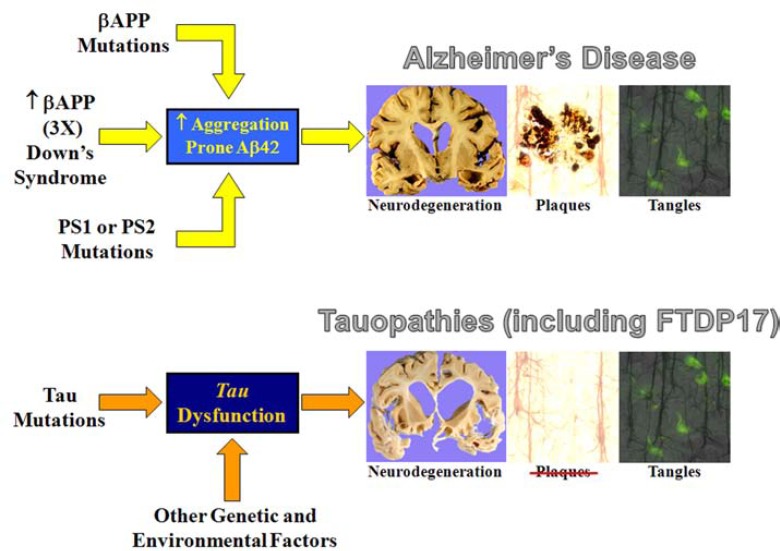Fig. (4).
Comparison of AD and Tauopathies. In inherited or familial AD (FAD), the disease is characterized by neuronal degeneration, plaques, and tangles. FAD is caused by increased APP expression (such as in Down’s syndrome or in rare families with an extra copy of the APP gene), mutations in APP, or mutations in the presenilin genes, which all lead to an increase in aggregation- prone Aβ. In chromosome 17- linked frontotemporal dementia with parkinsonism (FTDP17), the disease is characterized by neuronal degeneration and tangles, but no plaques. In FTDP17, mutations in tau – the major component of neurofibrillary tangles – leads to tau dysfunction and / or aggregation. Other genetic and environmental factors can also lead to tauopathies. The most straight-forward conclusion is that tangle formation as a consequence of abnormalities in tau causes neurodegeneration. Since plaques are not a pathologic feature of tauopathies, we can also conclude that tau-induced neurodegeneration does not cause the formation of plaques. Since tangles occur in FAD along with Aβ pathology, a simple synthesis of what we know about both diseases indicates that Aβ (in some form) causes both tangles and neurodegeneration.

